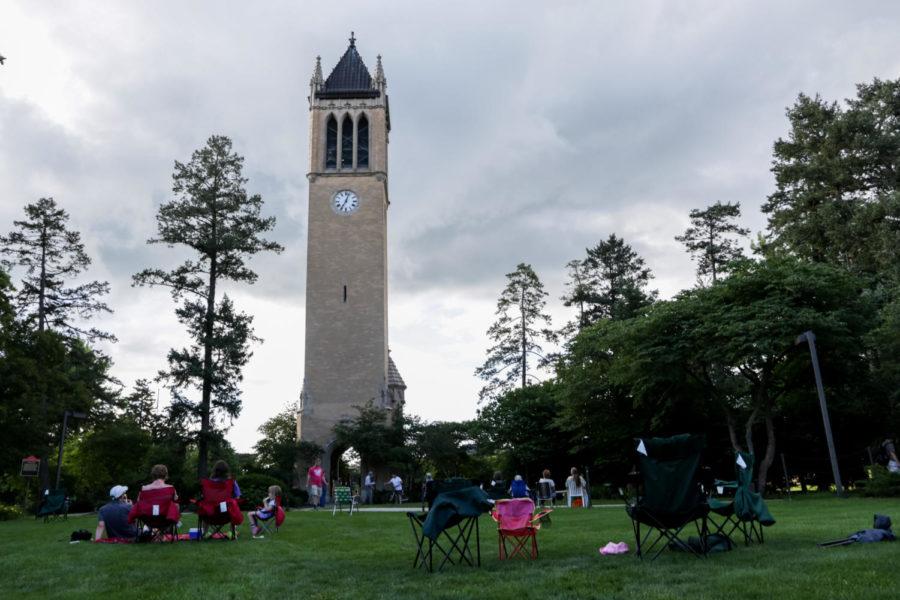Need to Know: Iowa State Traditions
Mikinna Kerns/Iowa State Daily
Members of the Ames Community gather around the Campanile June 26 to listen to Mark Konewko from Milwaukee, Wisconsin play the bells. Konewko played a total of 13 songs followed by a meet and greet session where listeners were invited up into the campanile for a tour.
July 10, 2018
In the long history of Iowa State, a land-grant university founded in 1858, many great stories and traditions have become associated with the university.
Cyclones
Iowa State garnered the nickname “Cyclones” in 1895 after the football team beat Northwestern 36-0. Before then, Iowa State was called the Iowa Agricultural College.
The Chicago Tribune stated: “Northwestern might as well have tried to play football with an Iowa Cyclone as with the Iowa team it met yesterday. At the end of 50 minutes’ play, the big husky farmers from Iowa’s Agricultural College had rolled up 36 points, while the 14-yard line was the nearest Northwestern got to Iowa’s goal,” according to ISU Historian Earle D. Ross in his 1943 book, History of Iowa State College.
Cy
One of the most well-known figures involving Iowa State University is the mascot, Cy. The decision to make Cy the mascot was made in 1954.
According to Iowa State admissions, “A cardinal was selected as a mascot because it is difficult to depict a cyclone as a mascot.”
The Pep Council had a contest to decide what the mascot’s name would be. Mrs. Ed Ohlsen of Ames was the one to put down Cy as the new mascot’s name.
According to Iowa State admissions, she won a cardinal and gold stadium blanket as her prize for putting down the winning name.
Campanile
One of, if not the most talked about traditions among students and faculty at Iowa State University is the Campanile. The story of the Campanile begins with Edgar Stanton, who graduated with the first class in 1872.
“He spent 50 years at the university, becoming the head of the Department of Mathematics, secretary to the Board of Trustees, dean of the junior college, vice-president and on four different occasions acting president,” according to Iowa State Admissions.
Margaret MacDonald Stanton, his first wife, was the first dean of women at the university.
After losing his wife in 1895, Edgar wanted to build a statue to commemorate his wife. So, He finally decided to install a chime with 10 bells on central campus.
According to Iowa State Admissions, The University president at the time, William M. Beardshear, helped him choose the site for the Campanile.
Stanton died in 1920, and requested that his estate be used to make a memorial for him.
Edgar got married a second time, to Julia Wench Stanton, and the children “requested that the university install 26 additional bells, thus forming a musical instrument which became known as the Edgar W. and Margaret MacDonald Stanton Memorial Carillon,” according to Iowa State Admissions.
Campaniling
Since the story of the campanile originated, the university has increased the number of bells from 10 to 50 bells and the campanile’s influence has grown since then as well.
History has it that, a student officially becomes an Iowa Stater when he or she is kissed under the campanile at the stroke of midnight. During homecoming, hundreds of students gather for mass campaniling. Couples kiss, the band plays, and fireworks go off at the stroke of midnight.







